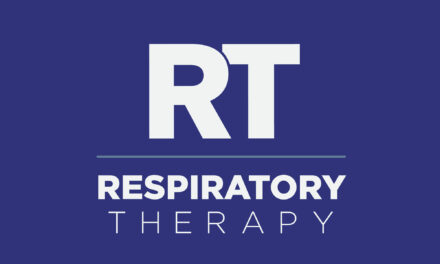Whether profit or nonprofit, medical centers must come up with purchasing strategies that will get them the most for their money

RT spoke with three institutions about their capital purchasing processes.
Duke University Medical Center
Duke University Medical Center is a regular on the Best Hospitals list published by U.S. News & World Report. With 1,000 beds, the nonprofit medical center is large enough to be its own group purchasing organization. One person, the associate director of respiratory care, is ultimately responsible for identifying equipment that has to be replaced as well as the new technologies that will benefit the patients, staff, and the bottom line. For almost 7 years, Michael Gentile, RRT, FAARC, was that person. Now a researcher, he is still involved in procurement and evaluation of prospective products, and his purchasing strategies are still in place. During his tenure, he managed 110 full-time employees and a $30 million budget and wrote a paper on capital purchasing and managing new technologies in respiratory care for Respiratory Care Clinics of North America. Although Gentile had a fair amount of autonomy as associate director, he insisted on getting a lot of feedback from colleagues and was guided by one simple rule when it came to buying capital items: “Spend more time making the decision than defending it.”
Purchasing at the medical center is a multistep procedure. Gentile compares the process to requesting funds from Congress because after all the paperwork is prepared, presentations to multiple executive committees are necessary. In these meetings, the purpose of potential purchases is defined and reasons are offered to justify the new equipment. Expensive purchases have to be justified to the “T.”
Gentile is a big advocate of enlisting the advice of employees who will be working with the equipment. “You learn the hard way that if you don’t involve [key parties] in the decision, you’ll get questions. If they’re involved, it will be much easier. Plus, when people have stakes in the decision, they have ownership,” Gentile says.
He is not just talking about involving employees who will work hands-on with the new equipment. Once he had an evaluating tool, Gentile gave it to every stakeholder who would be evaluating the product. Gentile created a different group of questions for each group that evaluated the device. For instance, the finance department worked with Gentile to create reports that showed revenue streams, depreciation, the effect on efficiency, productivity, and the impact and cost of training. When planning a ventilator purchase, Gentile asked evaluators to compare components like triggers, modes, operator’s interface, patient monitors, and cycle variables. The evaluation also had space for comments. Educational concerns had to be considered: How would the new equipment be implemented once it arrived? Everyone had to be certified in the operation. The needs of the financial department are more abstract than are the needs of the staff members who work hands-on with the equipment. After the data was collected, groups met to discuss the findings. One complication was finding a product that satisfied everyone.
In addition, the department considered performance, ease of use, and the patient population that will utilize the new equipment. Price is also a factor, but a small one, because competition is a great leveler, according to Gentile. He also created a spreadsheet that separates the different features offered by the piece of equipment to ensure that it has the technology to match the current and future practice. Another column on that spreadsheet is “cost of ownership.” That sum includes the price of the device as well as parts, supplies, and performance maintenance that are necessary to run the equipment. Sometimes, capital equipment that has a lower price tag than similar items will have a higher cost of ownership than those products.
When comparing devices, Gentile also got input from other owners of the device by going to online discussion groups and Listservs. He contacted current owners through a vendor’s user list. Gentile says that it is easy to get information from colleagues in similar roles. All of this research is time-consuming, but if it is done right, the choice is often a cinch, he says, adding, “You want the decision to make itself, because a lot of the products are similar. You have to figure out what makes them different.”
Once the choice is made, the decision is delivered to the procurement department who starts negotiations with the vendor. Eventually, a contract is created and services included with the device are negotiated.
At Duke, all capital equipment is purchased. Gentile thinks it is too risky to rely on rental agencies, because if the agency does not have an item when it is needed, the medical center is put in a difficult position.
One of the toughest aspects of purchasing is the long-range capital plan in which equipment needs must be predicted for 1, 2, 5, and 10 years in the future. “If you can look out 10 years and see what you’ll need capital-wise, then I’m going to put you on the first plane to Vegas and I’m going to meet you there,” Gentile says. “Because you have no idea what the size of the hospital will be [a decade from now].”
Sometimes the medical center also tries to get an evaluation model of a considered device. Although helpful, Gentile says that using a demo model for a short time is not always beneficial because 20 of the same model may perform differently.
As with many medical centers, Medicare cuts have affected Duke. “As revenue streams for hospitals decrease, then there is less money available for capital expenses,” Gentile says. “The financial picture of any hospital affects its capital expenditures because if it is having trouble making the payroll, then it is not going to be buying capital medical equipment.”
North Colorado Medical Center
The North Colorado Medical Center (NCMC) is a 325-bed, nonprofit hospital in Greeley, Colo. It belongs to a purchasing group, and when it is looking to buy a product, it will find out if there is a preferred vendor. For items like ventilators, the buying group has two preferred vendors, and the medical center evaluates the offerings from both to see if either offers a unit that meets its needs. The medical center can look at vendors who are not on the approved list, “but it’s a little bit of a financial disadvantage for the organization to not go with those vendors. My organization is supportive of [going off-list when necessary,]” says Ed Amend, RRT, director of respiratory.
Working with a purchasing group, Amend says he has some autonomy. When looking at prospective purchases, he considers the quality of the product, the reputation of the company, the cost, and the need for the device. Amend also considers the prices of disposables and if the device requires proprietary disposables because those will always be more expensive than nonproprietary supplies.
The medical center does have an approval process in place, but “if you have your ducks in a row, there shouldn’t be a problem,” Amend says.
Amend stays informed about new products by reading trade journals, attending the annual American Association for Respiratory Care conference, and meeting with sales representatives. He has some advice for his colleagues: “Don’t ever be afraid to negotiate. You can always get a little something more,” Amend says. “Buying organizations have somewhat gotten rid of some negotiating ability. Don’t ever think that you cannot negotiate.”
The Wesley Medical Center
The Wesley Medical Center (WMC) is a 600-bed, for-profit medical center in Wichita, Kan, and a member of a purchasing group. Brad Windham, RCP, equipment manager for respiratory care, has been at the medical center for 32 years, and during the first decade of his career the center was not part of a buyer’s group. He says that being a member does not necessarily benefit the department financially.
“For this department, I could probably save us money by buying [equipment] myself. I could probably find some items for less. Obviously, on some products, the buyer’s group is going to have the best price. I could probably do as good a job as the contracts do, but I’m just one small department in one hospital in a 168-hospital buying group,” Windham says.
Membership does have its privileges—it allows for purchases to take less time because Windham does not have to do as much research, and the purchase orders go through quickly.
Windham says that he is allowed to buy items from vendors who are not under contract. “I have to have a lot of justification if I go off contract. Not that it can’t be done, but I have to make sure I’ve done my homework to determine what this device offers that the one I could purchase on contract doesn’t offer. That has to be documented and researched.”
He was in the process of trying to buy an off-contract pulmonary exercise and pulmonary function system at the time of the interview. The particular unit offers better metabolic measuring technology than the device that is on contract. Windham says that buying off contract sometimes leads to that vendor being added to the preferred vendor list.
Conclusion
Regardless of size or nonprofit status, respiratory therapy departments have a few commonalities in buying. Communication is key. Inside the department, that translates to getting feedback from coworkers and fellow departments to make the most informed decision possible. When working with vendors, communication revolves around hammering out the details of contracts as well as negotiating price. Within a buying group, communication often means making requests that sometimes turn into unintentional advice because buying off-vendor lists suggests an insufficient offering. When buyer’s groups adjust to fill insufficiencies, all members can benefit.
(Editor’s Note: According to a recent survey on RT’s Web site [www.respiratory-therapy.com], 75% of respondents said that their facilities belonged to a group purchasing organization.)
Stephen Krcmar is a contributing writer for RT.








